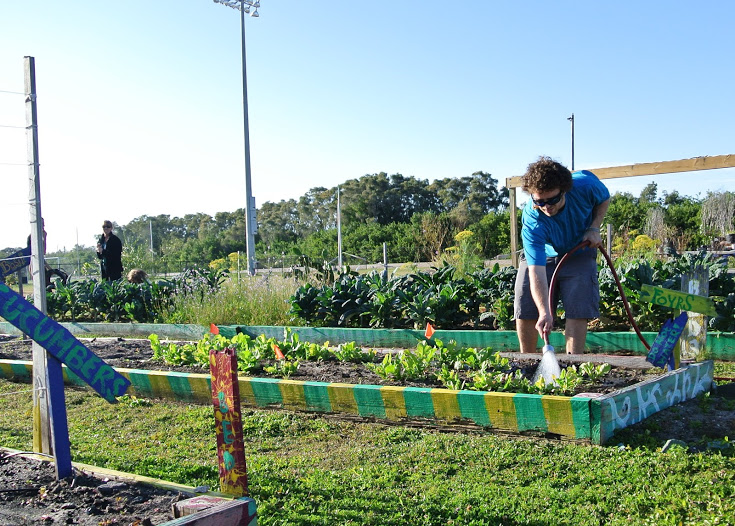
Planting and harvesting crops is an art of experimentation, but you can do some homework to ensure the tastiest, healthiest harvests possible.
Knowing what crops to grow is a tough task. It’s a balancing act between knowing what grows well on your land, and knowing what people want to eat. Each piece of land has its own personality, and it may be a couple seasons before your know your land’s unique temperament. Talk to local farmers – they are your best allies when it comes to knowing your climate, your soil, and what grows well in your region. Talk to your food service and potential growing partners to learn what folks want to eat. Our Resources page also has links to sites about regional planting schedules and key crops, as well as classes and certifications for finessing your growing skills. Students are uploading their own planting guides to the Preparation, Planting, and Pest Control folder in the Google Drive.
Most importantly, growing food is not a perfect science. All growers learn about pests and diseases the hard way, but they also find out what grows best by reaping unexpectedly bountiful harvests. Gardening and farming will have its ups and downs. You can do a lot to be successful — building strong soil, composting, and planning ahead — but you can’t control or predict everything. Work hard to learn the growing ropes, but embrace experimentation and the ability to adapt.
PLANTING AND MAINTENANCE RESOURCES:
- Introduction to Permaculture by Bill Mollison
- How to Grow More Vegetables by John Jeavons
- The One-Straw Revolution: Introduction to Natural Farming by Masanobu Fukuoka
- Gaia’s Garden by Toby Hemenway
- Let it Rot! by Stu Campbell
- The Rodale Book of Composting by Grace Gershuny and Deborah L. Martin